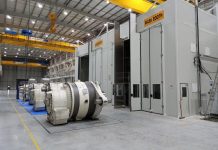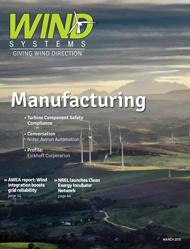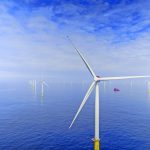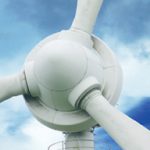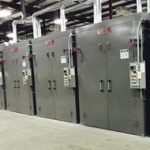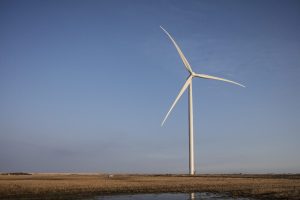When engineering a new wind turbine, it’s a design process that relies on thousands of different components working seamlessly together. While the focus may get drawn toward bigger components like motors and blades, it’s the small components that can make or break a system.
Take for example the slip ring assembly — known also as an electric rotary union —for pitch control systems. In the big picture of a turbine, it’s a small component. But its importance is all but miniscule. If your slip ring shuts down, your turbine shuts down.
 So even though in the scheme of things a slip ring seems small, it’s a big deal. It’s important to choose a slip ring that’s custom designed for your turbine and built to last.
So even though in the scheme of things a slip ring seems small, it’s a big deal. It’s important to choose a slip ring that’s custom designed for your turbine and built to last.
When looking at the effectiveness of a wind turbine slip ring, we take into consideration a variety of factors, including maintenance frequency, maintenance downtime, and power transfer.
Maintenance
More maintenance means more time and more money. If you have to replace slip ring brushes every 50 million revolutions, you’ll be stuck in a never-ending loop of slip ring maintenance.
However, the latest innovations allow for slip ring assemblies to go up to 200 million revolutions before brush replacement. UEA uses highly engineered copper graphite and silver graphite materials specifically designed for the rotational speeds, power usage and duty cycles for a turbine pitch control system to ensure maximum life potential. Can you imagine only having to replace your brushes every 10 years? That’s a huge savings in parts and labor.
Downtime
UEA’s slip ring design allows for only a single brush to be replaced—not the entire assembly. Other designs require entire sets of brushes to be replaced at one time. This can lead to an inefficient use of time spent replacing working brushes and material costs. Brush replacement on UEA slip rings takes about five minutes per brush, which gets turbines back up and running faster.
 When your downtime is reduced, your productivity and profit increase.
When your downtime is reduced, your productivity and profit increase.
Efficiency
Slip rings have a reputation for power loss and limited capacity. That mindset is an outdated one. Today’s slip rings can transfer higher wattage with decreasing power loss. For example, UEA slip rings have handled over 55 kW for pitch control motor use with circuits rated up to 100 amps and 690 VAC — all with a power factor (efficiency) of more than 99.5 percent.
Wattage transfer capacity and power loss are affected by a lot of factors, which is why custom designed slip rings are recommended for wind turbine applications to ensure proper capacity and function.
All things considered, relatively small slip rings are a big deal.
The same concept can be applied across the board to other components that are small in size but have big importance. While some parts often costs less up front, but lead to more expense in the long run — more maintenance, more downtime, more hassle, which add up to more money.

















